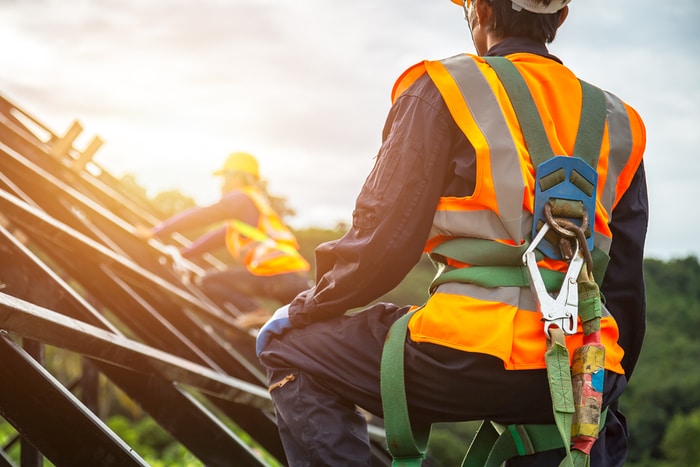The construction industry accounts for over 3 million jobs – understanding at 10% of total UK employment. thanks to the character of the work, it’s one among the UK’s most dangerous job roles with workers being exposed to a better risk of falls, machinery malfunctions, electrocution, falling objects, and structural collapses – just to call a couple of.
As an employer, it’s going to be tempting to chop corners to save lots of costs; but with workplace-related injuries being the explanation for over 2.2 million lost workdays annually, it’s in nobody’s best interests to avoid it.
There is a variety of the way to enhance health and safety in your workplace, and it doesn’t need to cost an arm and a leg. We’ve put together an inventory of our top 7 ways to stay workers safe within the housing industry, so everyone has more chance of keeping their body parts.
Click here for the best Residential Dumpster Rental
1. Ensure employees wear the right protective gear.
Wearing the right personal protective equipment (PPE) could mean the difference between a minor injury and an extended-term injury or maybe a fatality.
It’s important to supply your employees with the acceptable PPE relative to the sort of labor being administered. this will include helmets, ear protection, safety goggles, knee pads, and hi-vis jackets. If they become worn or unfit for purpose, they have to get replaced immediately. confirm they wear them, too!
2. Correctly construct and maintain scaffolding
When erecting scaffolding, there should be no shortcuts or improvisations. It should be built on stable ground with solid footing to eradicate the danger of it collapsing. make certain to take care of and repair any damage or inconsistencies of the structure, also ensuring that each employee using the scaffolding to possess an adequate level of scaffolding safety training.
3. Health & safety training
Construction workers operating in high and medium risk environments are required to possess sufficient health and safety training. they ought to be fully competent and conscious of the risks related to their actions, especially when performing at height, with machinery, or in confined spaces. it’s also advised that they need an appropriate awareness of care, having the ability to administer basic life-saving techniques if necessary.
The NEBOSH Construction Certificate may be a purposely designed Health and Safety course, providing workers with a good range of skills to be used within the housing industry.
4. Display clear signs
Construction sites are filled with potential dangers, not only for workers except for the general public too. It’s important to spotlight any hazards with signs and posters, warning everyone nearby to require precautions. Signs are an economical way of reducing accidents, which could indicate dangers like falling objects, turning large vehicles, or the presence of gas/chemicals.
5. Use technology
In today’s technological world, almost every adult within the UK owns a mobile – a majority of those being smartphones. It’s not all about texting and calling now – with smartphones comes apps and an entire universe of possibilities.
A lone worker guard may be a discreet and undetectable tool, app, or service which allows for communication with employers, or in additional serious situations, emergency services. The StaySafe App offers lone worker monitoring, with life-saving features including a push button, check-in, low signal mode, and low battery reminders. The app also features a person down alarm which will send an alert through the hub if a lone worker has not moved for a protracted period of your time. it’s a superb thanks to monitoring your staff’s safety whilst working separately.
6. Inspect tools and equipment regularly
Construction workers believe their tools to figure efficiently and obtain jobs done. If their tools are unsafe or broken, there are higher risks of great accidents including the loss of limbs. Equipment should regularly be inspected to make sure there are not any equipment malfunctions or defects. it’s both the responsibility of the worker and therefore the employer to spotlight issues with defective equipment.
Click here for the best Dumpster Rental Company
7. Communicate
Communication may be a major think about keeping employees safe. Staff should communicate with one another and with any alternative party if they identify potential risks. Those working onsite should remember of existing potential hazards but even have a conscious awareness of other dangers. Employees should be regularly asked about what they think could make their job safer and have the chance to report any accidents or near-misses. With recent research showing that 1 in six people wouldn’t report identified workplace hazards, there are several belongings you can do to beat barriers to hazard reporting.

